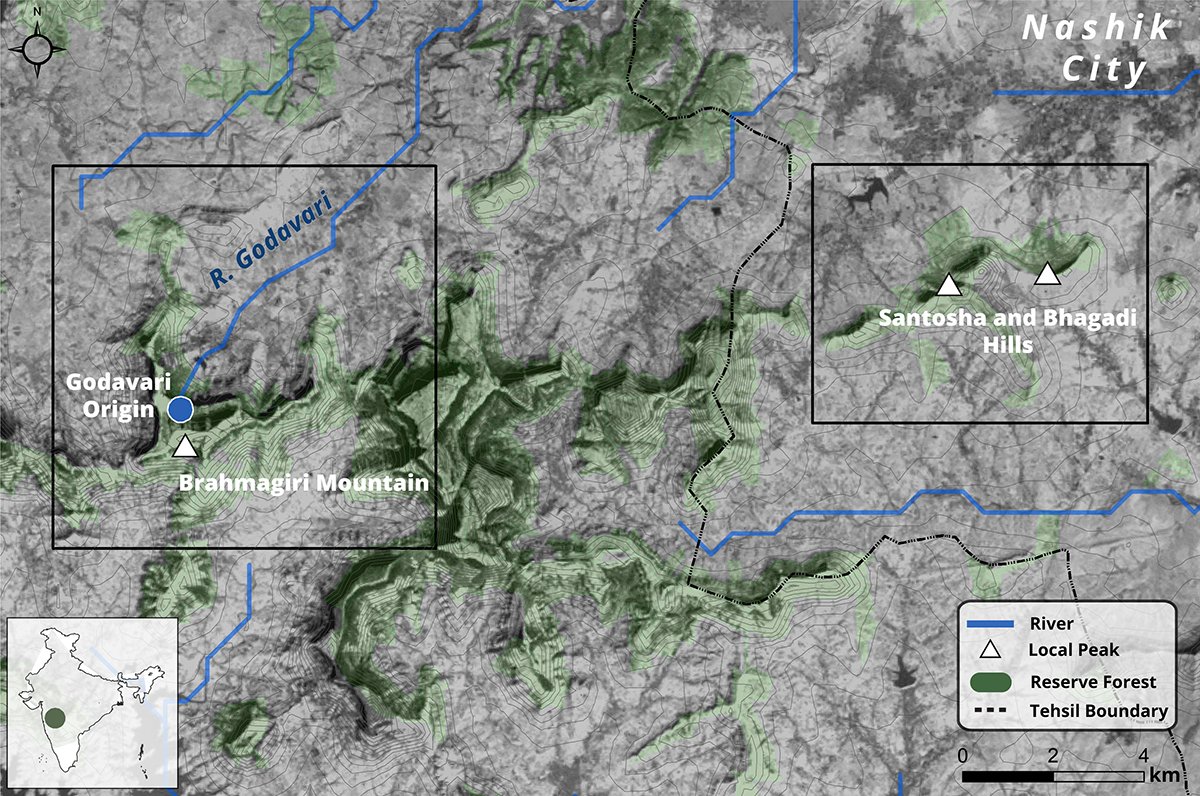In 2021, we began collaborating with Mongabay-India to enhance their stories with our spatial analysis expertise. Our joint goal is to use diverse storytelling formats to expand conservation awareness and reach a wider audience. This blogpost documents the second set of articles we’ve worked on together between January 2022 - March 2022
Birds in Delhi ponds remind us why we should not ignore small urban wetlands
This article makes note of Delhi's rich urban biodiversity recorded in its ponds amid housing colonies, parks while underscoring the need to pay attention to urban water bodies beyond protected wetlands.
In 2015, Pavagada was chosen as the location for Shakti Sthala - Karnataka’s most ambitious solar power project. Pavagada Solar Park, about 160 km from Bengaluru is spread across 13,000 acres. This article discusses the impact of India’s largest solar park that is experimenting with a new model of leasing land from farmers.
A night-light map of Pavagada Taluk and Bangalore City highlighting the contrast in available resources.
The ignorance of the Haryana government has cost the Aravallis dearly
A report on the impact of unchecked mining processes in Aravallis flouting prescribed rules and threatening local ecology. The article reports on the violations of conditions of environment clearance and approved mining plan and the impacts of the same.
We worked on the locator map for Dadam stone mine and other mines within the Haryana Aravallis.
Grasses spur mangroves to grow in an erosion-riddled Sundarbans patch
New research shows that Sundarbans mangroves, already at risk due to climate change, sea-level rise and land-use changes, are beginning to fast erode.
We worked on a map that indicates the above ground biomass in the Sundarbans for all living biomass above the soil including stem, stump, branches, bark, seeds and foliage. Mangroves are vital for carbon storage and most of this carbon is stored in the soil beneath mangrove trees.
Oil palm expansion in northeast India gives rise to human-elephant conflict concerns
This article reports on the expansion of oil palm in northeast India that encroaches on forest land leading to an increase in human-elephant conflicts.
The Assam government has plans to start oil palm cultivation in 17 districts, including heavily forested districts like Karbi Anglong and Dima Hasao.
(Note: This is the second blog in the series on our collaboration with Mongabay-India. Read the first blog here)














